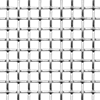Filter by
Material
Thickness
Width
Length
Appearance
Specifications Met
Tolerance Rating
Certificate Type
Wire Diameter
Hardness Rating
DFARS Specialty Metals
Fabrication
Hardness
Maximum Temperature
Construction
Mechanical Finish
Raw Materials
Fastening and Joining
Fluid Handling
Heating, Ventilation, and Air Conditioning































